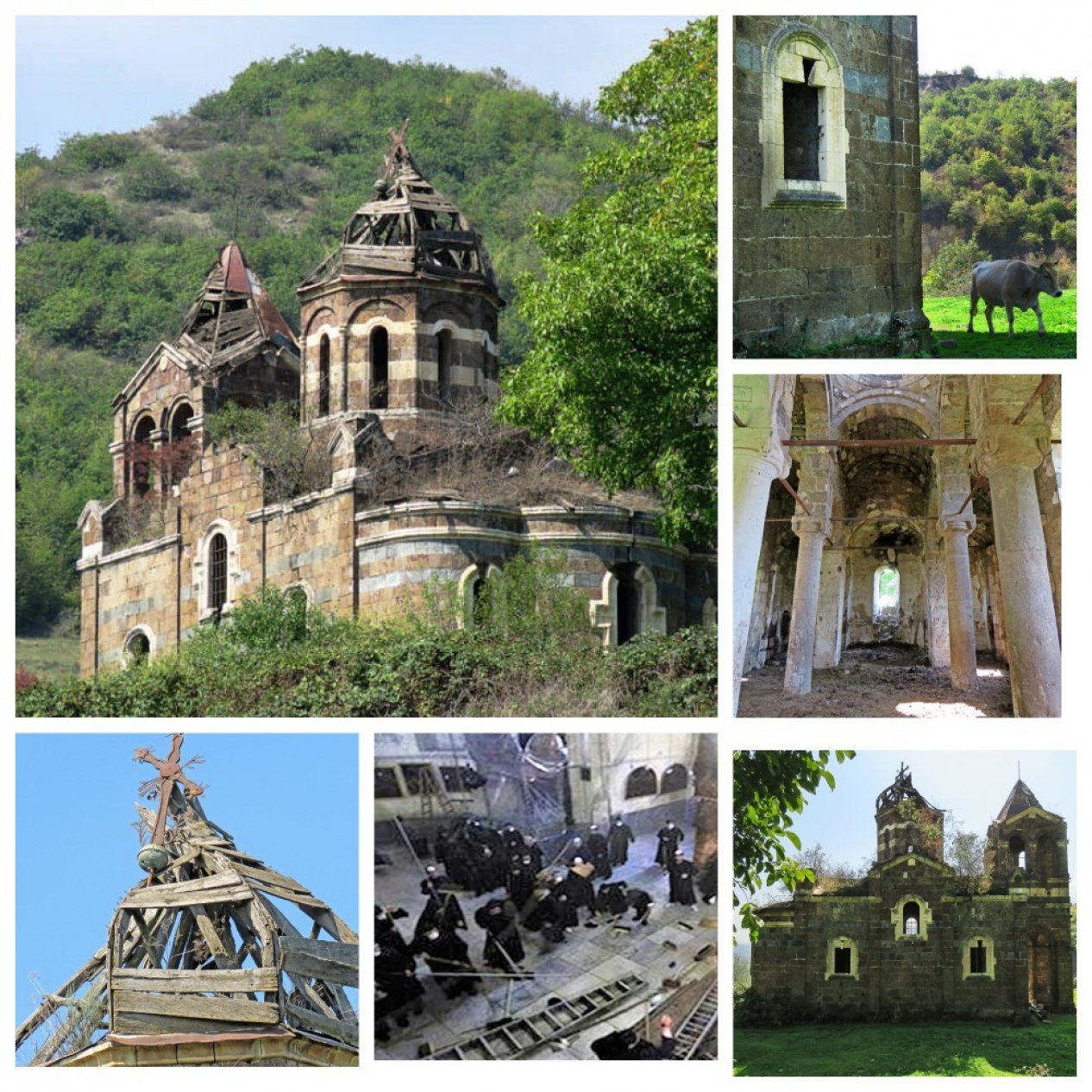
Recently, researcher and historian Sabuhi Huseynov, known for his research on West Azerbaijan, shared information on social networks. Sabuhi Huseynov writes: "There is a village to the west of Zangazur, near the city of Gafan. The name of the village is Gavart (or Kavart). A Greek came to the village of Gavart in 1851. His name was Kharlampik Kundurov. So the Greeks began to settle in Zangazur, They also deal with copper processing. The St. Karlampia Orthodox Church, which you can see in the photo here, was built in 1865. The photos are from 2020. The photos show that Armenians exhibit the same attitude not only toward Azerbaijani mosques, but also to Orthodox churches. The church is in ruins like our mosques, and has been turned into a shelter for the animals seeking shade from the sun. Armenia doesn't care about the destroyed monument. Do the Greeks, who have always been on the side of the Armenians, know about this?!"
As Faktyoxla Lab, we investigated the accuracy of this claim of the historian, as well as why the Armenians brought a church to such a state, which is considered sacred to them.
During our research, we determined that the pictures of St.Karlampia Orthodox Church in Gavart village of Kafan province of Western Zangazur were taken by Russian geographer Ilya Bunyanovski and published on his blog in January 2020.
He also states in his article,"Multinational Armenia. Yezidis, Assyrians, Greeks, Persian," that he was very upset by the state of the Greek Orthodox Church he encountered in the village of Gavart, that he had heard many times that mosques in Armenia and Karabakh were in such a state, and that he had seen such an Orthodox church for the first time.
‘Even the church has turned into a barn where sluggish cows escape from the heat…’ He shared another picture, writing: ‘Animal droppings in a Byzantine-looking church.’
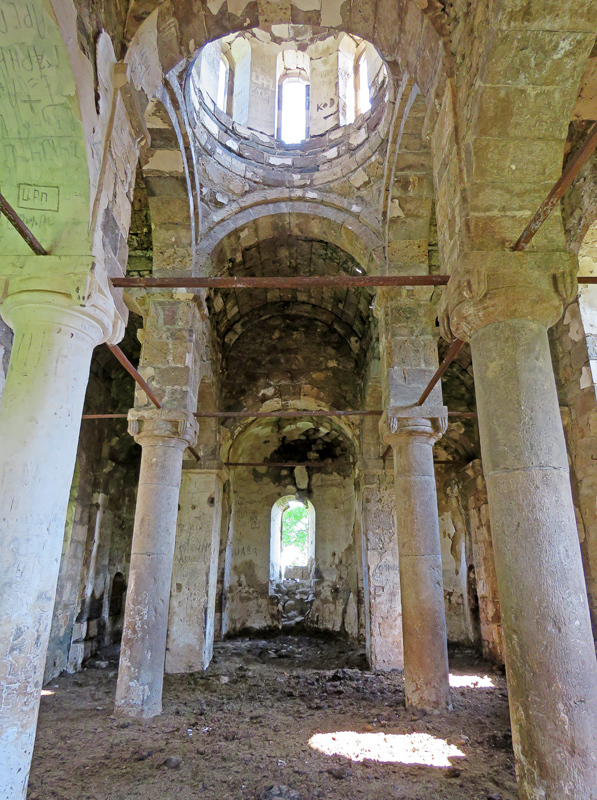
Although Ilya Bunyanovski, who provides comprehensive information to his readers about different ethnic and religious identities in Armenia, sometimes tries to distort the events by approaching them with bias and even hatred, in light of his information, we learn that the person who built this church is Kharlampik Kundurov, an Orthodox Greek from Turkiye's Gümüşhane province. It is also known that Kundurov, who operated the copper mines of Alaverdi province, established factories and production facilities in series there. Bunyanovski writes:
“Hidden among the blackberry bushes are the remains of a Greek cemetery. The most important thing any Armenian knows about the Greeks is that they all left this region. They went not to Siberia in the 1940s, but to Greece in the 1990s, which cannot even be called a historical homeland. In general, the same applies to all Greeks living in all regions of the former USSR, even in Essentuki, even in Tashkent, after all, as you know, they all say ‘Greece has everything!’ They left and did not return.” (source)
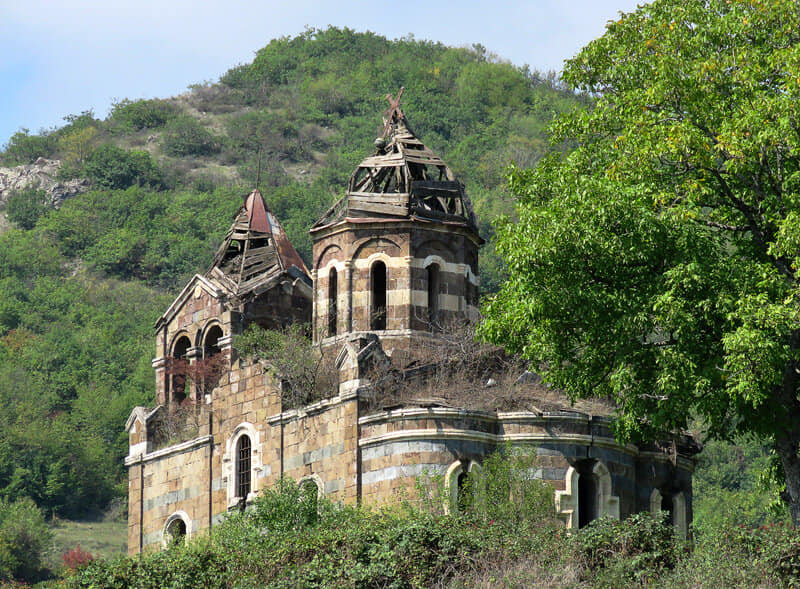
The problem is not limited to the experiences of the Greeks in the village of Gavart. During our research, it became clear that the Armenians in the village of Mehmana, which was one of the living quarters of the Greeks in the Kalbajar district, had similar behaviors towards the Greeks. Svetlana Bugadova, a pureblood Greek girl who lived in the village of Mehmana, told in an interview how she visited her hometown with her father. The last time Svetlana came was in 1983: "Previously, only Greeks lived in this village. I do not even remember that there was once an Armenian there."

After the increase in the number of Armenians in these lands, the peaceful life of other citizens began to be questioned. Mutual understanding and tolerance between peoples clashed with Armenian hatred. After the First Karabakh War, the Armenians began to destroy everything belonging to the Azerbaijani people, including the Greeks, in the village of Mehmana (Greek: Μεχμανά). In particular, the local cemetery was also destroyed and only a few Greek tombs survived this atrocity. When Armenian aggression against Azerbaijan began in the 1990s, many people left the village. Those who refused to leave Mehmana disappeared and there is still no information about them. The Armenian invaders, who took over the territory of Azerbaijan, first of all, began to demolish the houses of local residents. Not only were the Azerbaijanis harmed in Armenia's attack against Azerbaijan, but the Greeks also took their share from these attacks.
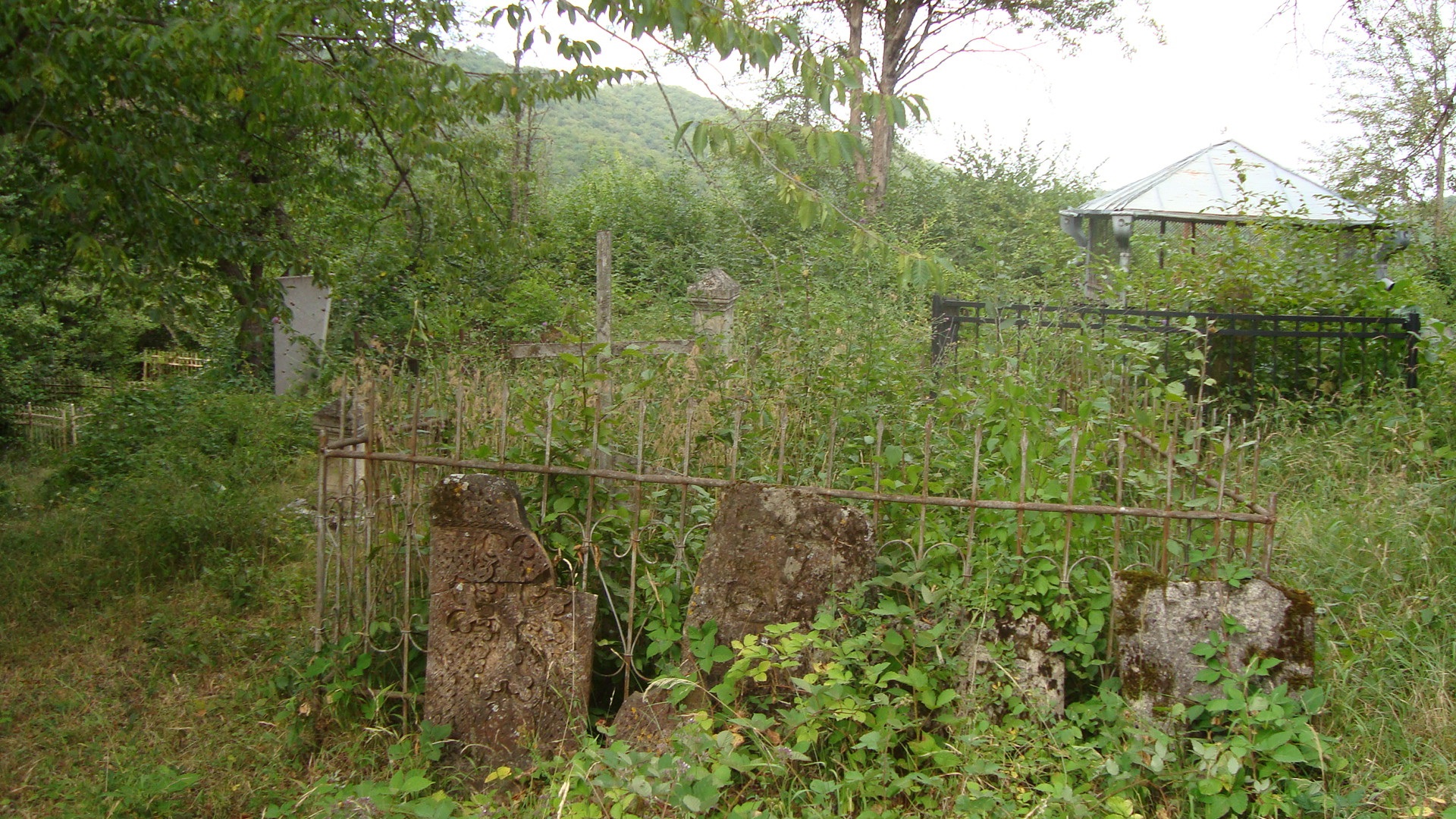
During our research, we learned that the Greek Orthodox Church in the village of Mehmana was also destroyed by the Armenians. Moreover, this brutal act does not end only with Mehmana. Especially during the Armenian occupation of Karabakh, all the old Albanian churches were claimed by the aggressors as "old Armenian Churches". Today, the Armenian side is trying to exploit this issue, accusing Azerbaijan of allegedly destroying its "ancient Armenian" heritage, but despite all this being built illegally in the last thirty years, now it is easy to identify where the monument used to be, thanks to modern technologies. source
Click here to read this in Turkish
It is very interesting that later in Armenia, they began to claim that the Greek community in the village of Mehmana was "protected". But in the local cemetery, the graves of not only Azerbaijanis, but also Greeks were destroyed. And “suddenly” Armenian symbols appeared in the church. Of course, the Armenian mind did in Mehmana what it could not do in Gevart due to geographical conditions.
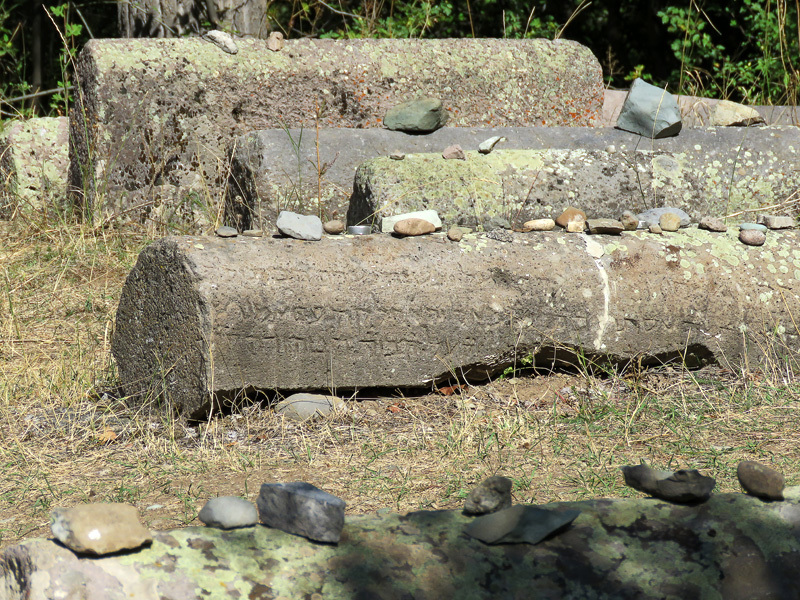
Now let's pay attention to why Armenians are hostile to Greek Orthodox. Although both the Byzantines, that is, the Greek Orthodox and the Armenians, are Christians, the differences in belief in the Christianity they advocate bring along differences that lead to unrecognition and tension between the two groups. These tensions and conflicts were an important part of Greek Orthodox and Armenian relations for centuries, as a significant part of both their internal and external relations was religious, leading to a permanent separation between the Orthodox and Armenian Churches.
As with many Christian denominations, there were actually only a few critical differences between the two sides. The core beliefs, such as Jesus being the Son of God, eternal life, and the congregation, were mostly the same. The main disagreements between the Armenian and Greek Orthodox Churches, in the name of medieval theology, can be divided into two main topics. Initially, Armenians rejected the Fourth Ecumenical Council, which was recognized by the Patriarch of Constantinople and the Pope in Rome, although many in Syria and Egypt opposed this decision. Secondly, the Armenian Church continued to be an autonomous church, contrary to Byzantine views on this matter. Although there were other issues such as Armenia's use of unleavened bread and unmixed wine for ritual, these two issues were the main points of discussion. source
According to experts, while the Armenians were at war with the Persians, a problem arose in Byzantium, known in science as “Christological disagreements”. The issue of the relationship between man and the divine in Christ was being resolved. The question was: By whose sufferings was humanity saved? The suffering of the Divine or the suffering of Humanity? Supporters of the Patriarch Nestorius (Nestorians) argued: God is not born, does not suffer and cannot die, therefore man suffered and died on the cross, and the divine essence in him remained apart. This version immediately had many opponents, but they went to the other extreme: they explained that Jesus was only God and that the human essence was not completely present in him. This thesis about the one nature (mono-physis) of Christ was called monophysitism. Thus, the Armenian Church remained in relative solitude - the Caucasian Albanian church and the small Kakheti province Hereti remained like-minded people. Something strange happened in Armenia: from 630 to 660 the Chalcedonians Ezra and Nerses were its Catholics. Many famous temples were built under them - the Gayane temple, Zvartnots, and it was Nerses who rebuilt (in the region) the Etchmiadzin Cathedral, which was erected in 618.

Due to its reputation, the Armenian Church gradually shifted from extreme Monophysitism to moderation, and then even more to moderation. The Council of Manzikert of 726 denounced Julianism, and this radical Monophysite doctrine was eventually rejected. A union with the Greek Church was almost to take place, but the Arab invasion prevented this. Gradually, the Armenian Church came very close to Orthodoxy, but still did not take the final step and remained a non-Orthodox church. Later on, there were attempts to get closer with Byzantium from time to time, but each time it was unsuccessful.
Surprisingly, Armenia avoided Islamization, and Armenian Monophysite Christians, like many Monophysites in Palestine and Syria, did not become Muslims. Monophysitism is so close to Islam in spirit that the conversion is almost painless, but the Armenians avoided such a conversion. source
After the death of Emperor Basil II (AD 976-1025), the years between 1025 and 1071 AD was the most oppressive period in Byzantine history for Armenians. With the conquest of Armenian states before and during this period, Greek clergy began to insist that Armenians convert to Orthodoxy. To defend them, the Armenians, who did not have an ethnic Armenian state, were left to handle these problems in the Byzantine Empire on their own. Emperor Constantine IX (1042-1055 AD) kept two Armenian Catholicos, Petros and II Khatchik, as prisoners in Constantinople. Constantine IX worked to completely eliminate the position of the Armenian Catholics, and Byzantine soldiers tortured the Armenians in Sebastia to reveal the whereabouts of the church's wealth. All these actions led to the deep resentment of the Armenians against the Byzantines. The situation for the Armenians was so bad that in the next century, the Syrian Patriarch Michael the Great said that it was the evil influence of Satan that the Byzantines did such terrible things, and the Patriarchate of Constantinople ordered the trampling of Armenian literary texts and holy oil. (Michael the Great, 175). Despite widespread persecution of the state, no primary source mentions any attempt at mass conversion of all Armenians, particularly the large Armenian contingent in the army or the ethnically Armenian Byzantine aristocracy.
The theoretical abolition of the Armenian church would be of great use to Byzantium. A source of Armenian national identity would disappear and confirm religious orthodoxy throughout Byzantium. Although political considerations are imperative, it is important to remember how significant religious beliefs were in the Middle Ages and that the Byzantines had no small interest in converting Armenians to Orthodoxy.
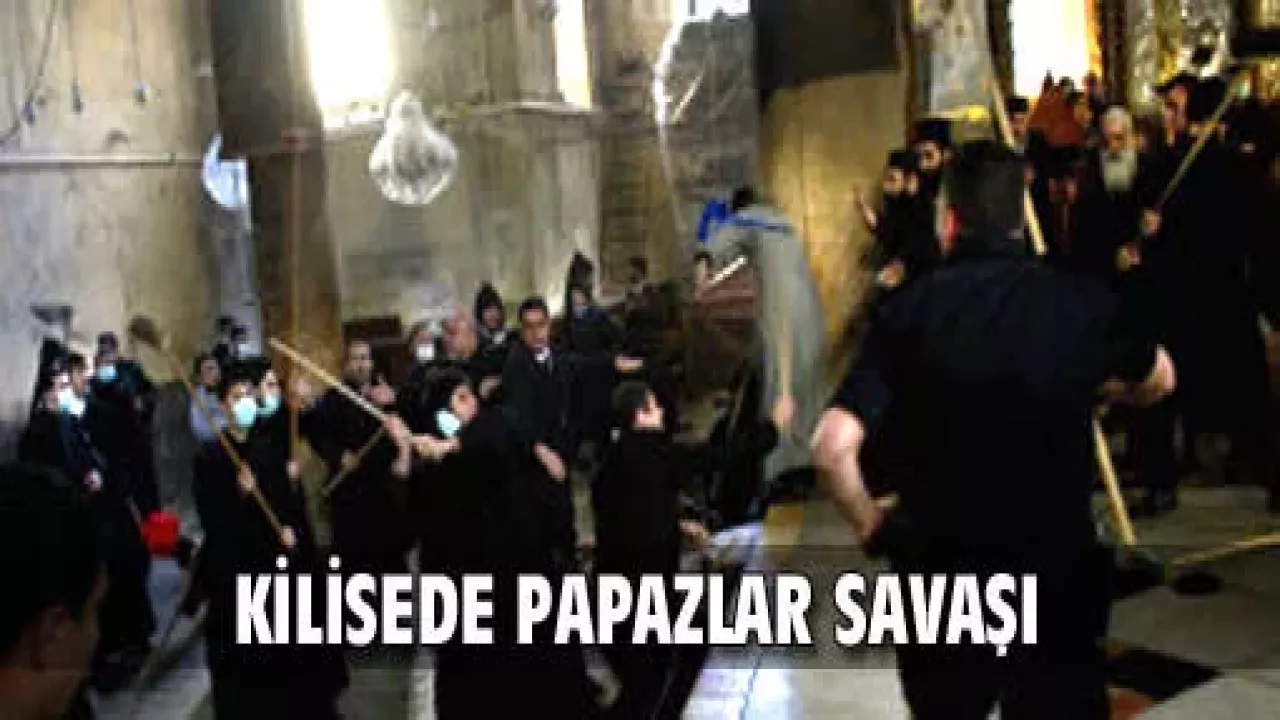
It is true that any chance of arguing would destroy the discord of religious beliefs almost immediately, but this stubbornness was not just a part of Byzantium. Neither the Byzantines nor the Armenians gave any credence to the other's religious disputes, and neither side took their stance, blocking any compromise agreement. source
Russian version available here
It is also observed that the priests of the Greek Orthodox and Armenian Apostolic Churches, which have big differences in belief, often get into fights. In general, the Armenian Patriarchate's participation in the celebration of Orthodox Easter, the day when the Holy Fire is lit in the Church of the Holy Sepulcher, on the Great Saturday of Holy Week, causes tensions to escalate. According to tradition, one of the most important Christian rites attended by the Armenian patriarch, the ceremonies for the removal of the Holy Fire, is overshadowed by the events that started when the Orthodox Greeks objected to this event. source
The conflict around the main Christian shrines in Israel between representatives of different denominations does not subside. The fact is that since 1856 the Temple has been divided between six denominations of the Christian Church: Greek Orthodox, Catholic, Armenian, Coptic, Syrian and Ethiopian Christians. Relations between churches have always been strained, although each has its own side chapels and prayer times, but in Israeli shrines the situation is even more serious: the clergy almost never agree on who has the right to touch which temple and who should perform the rituals when.
Their quarrels even reached the point where the key to the Church of the Holy Sepulcher had to be given to an Arab, as the Christians themselves could not figure out who would open it.
One of the biggest fights between these two churches took place in December 2007 in one of the main shrines of the Christian world - the Church of the Nativity in Beit Lehem, where, according to legend, Jesus was born. Then 80 clergy joined the fight in the temple: 50 Greek and 30 Armenian church representatives. The cause of the conflict was a misunderstanding by the Orthodox and Armenian churches during the cleaning of the temple after the Catholic Christmas holiday on the eve of the upcoming January 7 Christmas celebration. Allegedly, some of those involved in the fight went to the temple and touched the shrines that “do not belong to them”. This was enough to make the brooms and then sticks and stones fly in the air. source
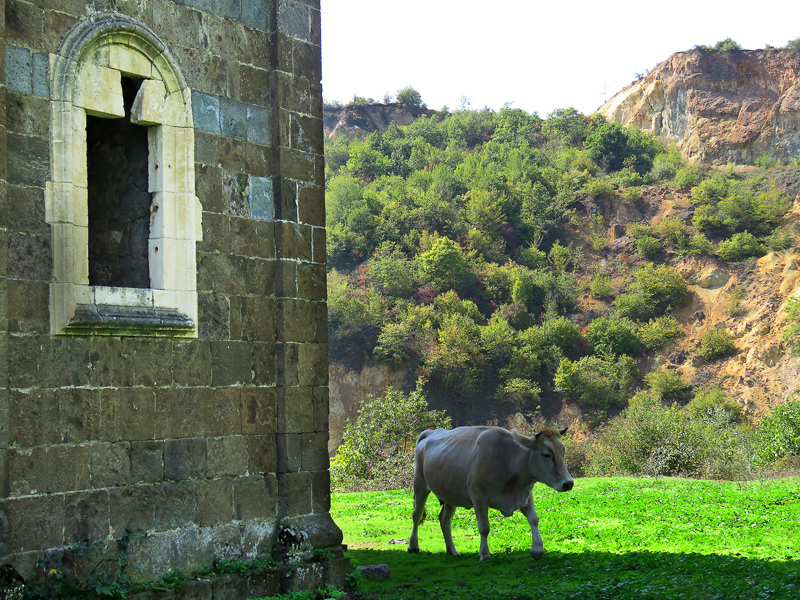
According to the BBC's report, the parties blame each other for what happened: Greeks demand respect for their rights, Armenians insist that foreigners not interfere with their traditional rituals in honor of the opening of the holy cross. “This is a violation of the status quo. Greeks have tried many times to place their monks near the tomb, but they have no right to do so during the Armenian ceremony,” one of the representatives of the Armenian church told reporters. The Greek representative, on the other hand, said that they would protest the violation of the clergy's right to be in the tomb by Armenians. “We stopped at the center and said we wouldn't leave. They refused, and at that moment the police appeared ”- said one of the Greeks, who did not give his name.
Koryun Baghdasaryan, the representative of the Armenian Patriarchate of Jerusalem, after telling the incident in an interview with Radio Azatutyun, ended his sentence in a way specific to his nation: “This was a provocation and I cannot say when these provocations will happen again, but we are ready, we know what they can do, we are ready to respond.” said.
Moreover, considering that the relations between the Moscow and Yerevan churches and the Tbilisi and Yerevan churches are problematic, it seems clear that the main source of the problem is the Armenian Apostolic Church. Because the Armenian Apostolic Church, known as one of the building blocks of the foundation of national existence, sees all the churches in the region as their own.
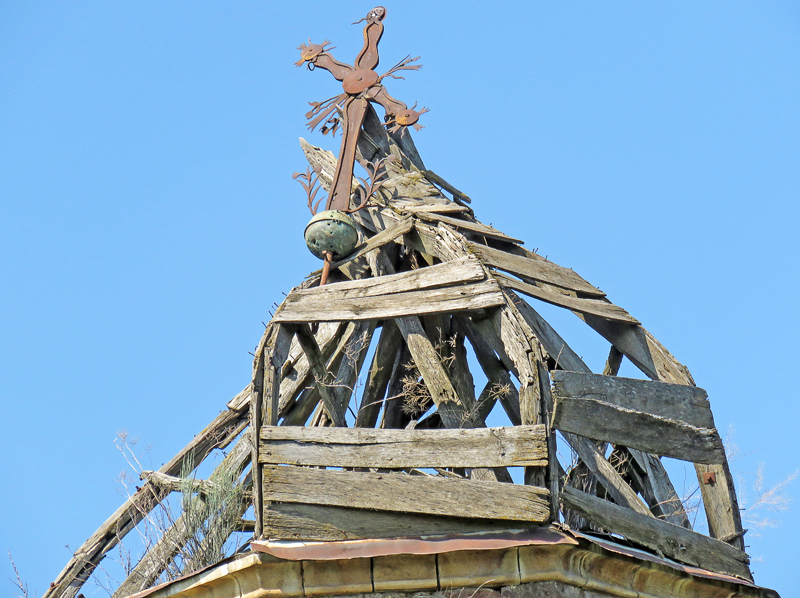
Conclusion
The main reason why St.Kharlamp Greek Orthodox Church in Kafan's Gavart village fell into ruins was that Armenians looked at the event from a sectarian point of view.
The alleged problems between the Greek Orthodox Church and the Armenian Apostolic Church are completely real.
It is also true that the Armenians want to Armenianize all the churches in the region.




















